In the original theatrical release of Star Wars in 1977, we are introduced to Han Solo, played to perfection by Harrison Ford.
He’s a self-assured, cocky smuggler and all-around scoundrel.
His selfish and rogue-like nature is established immediately in the Mos Eisley cantina when Han is confronted by bounty hunter Greedo.

After a quick repartee, Han pulls out his blaster and shoots Greedo without warning, murdering him in cold blood and walking away with a quick, “Sorry about the mess” to the bartender.
This demonstrates his cunning and survival instincts.
But in the subsequent 1997 Special Edition re-release, George Lucas altered the scene so that Greedo pulls his gun and shoots and misses, with Han returning fire in self-defense.
This change frustrated many fans, and a controversy arose with the rallying cry of “Han Shot First,” which is a bit of a misnomer as it is, because in the original, Han was the only one who shot.
This unnecessary change altered Han’s character from a morally ambiguous antihero to a more traditional hero figure.
Han being the one to shoot is much more in line with his rogue nature and reinforces his character development throughout the original trilogy.
The decision to shoot without warning conveys his ruthless and self-preserving nature. The action of “Han Shot First” establishes him as a smuggler who was willing to do whatever it took to protect himself and his interests.
Han’s actions demonstrated his street-smarts, quick thinking, and ability to make tough decisions in high-pressure situations.
It underscores his cunning and quick thinking, which are traits that define him throughout the Star Wars saga.
As the original trilogy progresses, Han undergoes significant growth, transitioning from a self-centered scoundrel to a hero who fights for a greater cause.
Han Solo’s story
Han has an extensive story that was told in the novels, comics and even the stand-alone Solo movie (we don’t talk about that movie around here though), but we’re not touching on those.
We’re strictly discussing Han’s progression in the original trilogy–the self-absorbed pilot we meet on Tatooine.
Episode IV: A New Hope
In A New Hope, Han Solo is introduced as a charismatic and roguish smuggler who primarily cares about himself and his ship, the Millennium Falcon.
He’s motivated by profit and self-preservation, and he operates on the fringes of the law.
When Han is initially presented with the opportunity to help Princess Leia and the Rebel Alliance, he’s reluctant to get involved. His main concern is avoiding the Empire’s attention and getting his reward.
However, as the story progresses, Han begins to show glimpses of heroism by rescuing Luke Skywalker during the Death Star trench run and ultimately aiding in the Rebel victory.
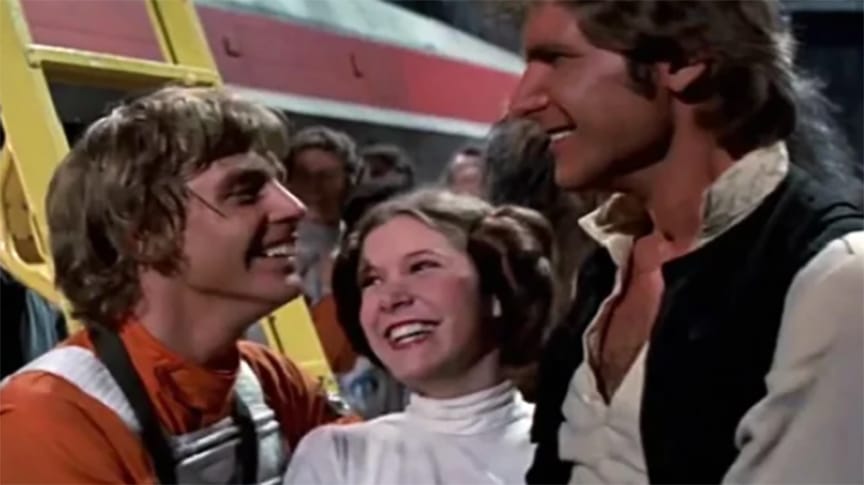
This is the start of his transition from a self-serving individual to someone with a sense of responsibility for the greater good.
Episode V: The Empire Strikes Back
In The Empire Strikes Back we delve deeper into Han’s character. He starts to display a growing sense of responsibility and loyalty to his friends, especially Leia.
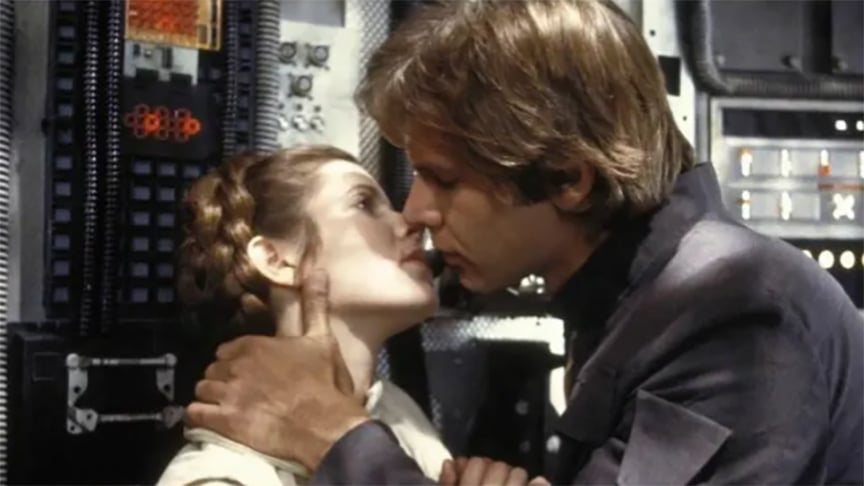
His feelings for Leia begin to deepen, and he becomes more emotionally invested in the fight against the Empire.
When Luke goes missing on the icy planet Hoth, Han risks his life to rescue him, displaying his growing bond with his friends and a willingness to put their safety above his
Another important aspect of Han’s development is his reconciliation with his past.
The introduction of his old friend, Lando Calrissian, helps shed light on Han’s history and the reasons for his cynical and guarded nature.
Han’s heroism reaches a climax when he is captured by Darth Vader and frozen in carbonite.
His willingness to sacrifice himself for his friends demonstrates his full transition from anti-hero to hero.
Episode VI: Return of the Jedi
By the time of the final film, Han’s transformation into a hero is more pronounced.
He has become a trusted member of the Rebel Alliance.
While he starts the film still in the clutches of Jabba the Hutt, he ultimately plays a crucial role in the mission to destroy the second Death Star and overthrow the Empire.
One of the most significant moments in Han’s hero development is his confrontation with his old friend Lando Calrissian.
Han initially assumes Lando betrayed him to the Empire, but he eventually forgives Lando when he learns that Lando is fighting against the Empire as well.
This showcases Han’s growth in his ability to forgive and trust others, traits essential to a hero.
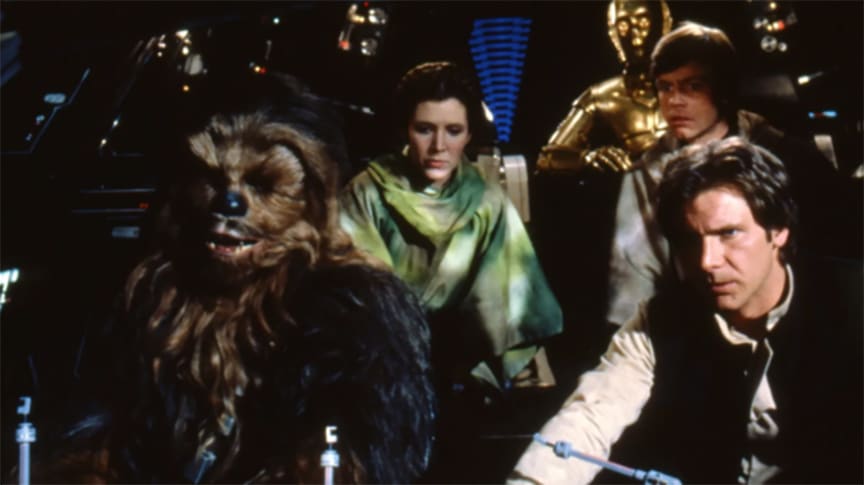
By the end of the original trilogy, Han fully embraces heroism and selflessness.
His growth as a character is exemplified by his decision to lead the ground assault on the shield generator on the forest moon of Endor, risking his life for the greater cause.
Throughout the film, Han demonstrates selflessness, bravery, and loyalty to his friends, which is in stark contrast to the self-absorbed smuggler we’re introduced to in the Mos Eisley cantina.
The Importance of Han Shooting Greedo
By showing Han shooting first, the original scene highlighted his initial amorality, providing a starting point for his character development.
It established a baseline from which the audience could witness his transformation throughout the series.
By altering the scene in the Special Edition release, George Lucas sought to present Han Solo as a more upright character.
The change suggests that Han only fired in self-defense after Greedo attempted to kill him.
This alteration was intended to align Han with the traditional hero archetype and present him as a more sympathetic and morally righteous character.
However, many fans argue that the change weakens Han Solo’s character and dilutes his roguish charm.
It diminishes Han’s complexity as a character and simplifies his arc.
The original version showed Han’s unpredictable and sometimes questionable nature, making him a complex and flawed anti-hero.
This ambiguity and imperfection made his eventual transformation into a selfless hero and a key figure in the Rebel Alliance more compelling.
A Hero’s Journey
Han’s storyline through the original trilogy perfectly fits into the archetype of the hero’s journey.
This outlines the typical stages a hero goes through in their journey of self-discovery and transformation.
The Ordinary World
He starts as a skilled, but self-serving smuggler, living on the fringes of society and motivated by self-interest and survival.
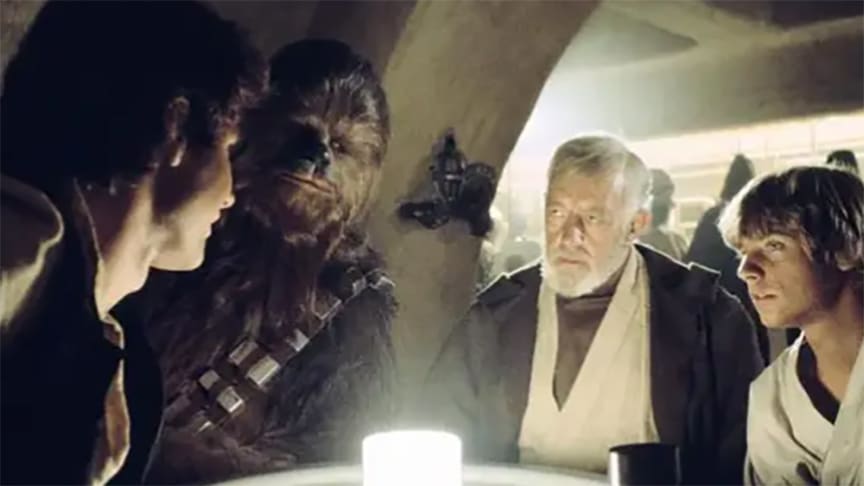
Call to Adventure
His call to adventure comes when he crosses paths with Luke and Obi-Wan Kenobi and their need to make it to Alderaan.
Refusal of the Call
He initially refuses the call due to his reluctance to get involved, he’s focused on his own interests and doesn’t want to risk his own neck.
The promise of credits eventually changes his mind.
Meeting the Mentor
This one is a little trickier here, the only part of his storyline that doesn’t perfectly line up with the framework for the hero’s journey, as Han’s mentor figure is arguably Chewbacca, his loyal co-pilot and friend.
Chewbacca often provides guidance and advice, and their relationship plays a significant role in Han’s growth. And he doesn’t meet him in this film.
Crossing the Threshold
Han crosses the threshold when he decides to rescue Princess Leia from the Death Star, putting himself in direct opposition to the Empire and taking on a more active role in the fight against evil.
This marks his physical departure from his ordinary world into the larger conflict.
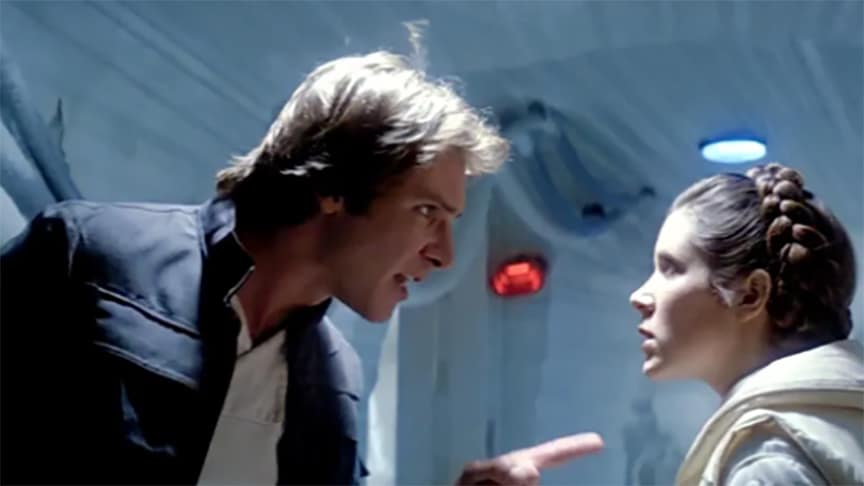
Tests, Allies and Enemies
Throughout his journey, Han faces various challenges and tests. He forms close bonds with Luke and Leia, becoming more entrenched in the Rebellion.
He’s tested on Hoth when he has to decide whether to pay off his bounty to Jabba the Hutt or help Leia escape.
And he encounters several enemies throughout the trilogy, including Boba Fett, Darth Vader and Jabba.
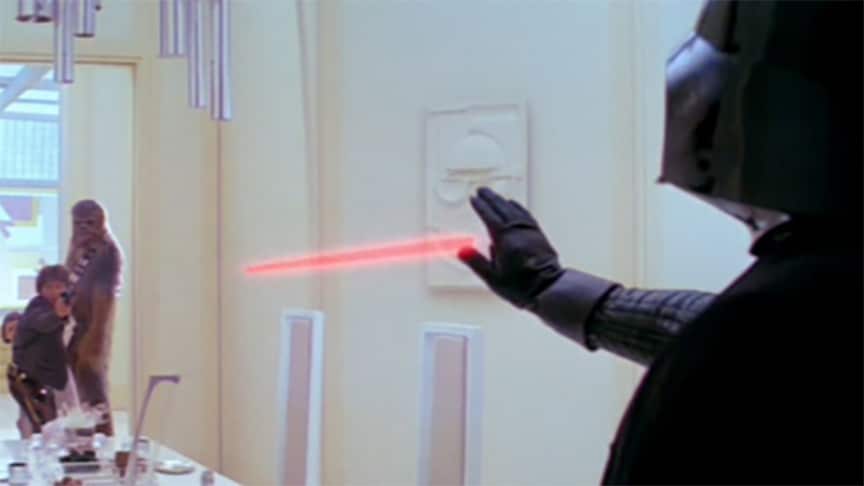
Approach to the inmost Cave
The inmost cave represents a moment of intense challenge or self-discovery.
For Han, this occurs during the Battle of Yavin, where he overcomes his skepticism and becomes a vital part of the Rebel alliance’s effort to destroy the Death Star.
It can also be seen in his growing affection for Leia. He starts to develop feelings for her, which conflicts with his initial self-serving attitude.
Ordeal
Han’s ordeal comes when he is captured by the Empire on Cloud City.
He is frozen in carbonite and handed over to Jabba the Hutt, leading to a period of uncertainty for his fate.

Reward (Seizing the Sword)
Han’s reward is twofold: he’s rescued from Jabba’s captivity by his friends, and he realizes that he’s become part of something larger than himself – a hero fighting for the cause of good.
He also gains a deeper sense of purpose by aligning himself with the Rebellion, and he earns Leia’s affection through his selfless actions.
The Road Back
Han’s journey back involves helping the Rebels formulate a plan to destroy the Death Star.
He becomes more invested in and committed to the Rebellion’s cause.
He returns to aid in the Battle of Endor, contributing to the ultimate downfall of the Empire.
Resurrection
Han’s resurrection moment comes when he confronts his own doubts and fears about his place in the galaxy and his relationship with Leia.
He emerges as a more mature, caring individual, ready to embrace love and a sense of duty.
Return with the Elixir
In the end, Han helps defeat the Empire, brings balance to the galaxy, and finds personal redemption.
He’s returned to the role of hero, not only for the Rebellion but also for his own growth as a person.
Han returns as a changed man.
He is now fully committed to the Rebellion and its ideals, rather than just himself.
His journey has transformed him from a selfish smuggler to a hero who fights for the greater good.
And it all started with him shooting Greedo to showcase the journey from anti-hero to hero.
Conclusion
“Han Shot First” has become a rallying cry among fans who appreciate the original portrayal of Han Solo’s character.
It represents the belief that Han’s unhesitant action, shooting Greedo without waiting for the threat to escalate, reflects his true nature and contributes to his growth as a character.
It celebrates his independent and morally ambiguous spirit, which eventually evolves into a sense of responsibility and loyalty to his friends and the cause of the Rebellion.
His shooting of Greedo is important to his character development because it captures the essence of his morally ambiguous nature and establishes him as a complex anti-hero.
It represents the belief that his unapologetic actions and quick thinking define his character, making his eventual transformation into a hero more meaningful and inspiring.

